What is a green-blue roof?
14 November 2019Fact: The climate is changing. As a result, the weather is becoming increasingly unstable; it rains harder, more often, alternated with long dry periods. Heavy rainfalls cause an increase in problems within urban environments, resulting in floods and overloaded drainage systems in these peak periods. With increased paved areas comes a reduction in a city’s capacity to temporarily absorb rainwater. Between 40 and 50% urban surface area is flat roofs. A green-blue roof can play a major role in the future water management in these cityscapes.
The green-blue roof combination
A green-blue roof is a multifunctional roof specially designed to store or buffer as much water as possible within its vegetation. Each of these roof types are known by a colour – one that indicates their primary purpose or function – and multifunctional roof is made up of more than one of these colour indicators. The different types of roofs are shown below:
Green roof – Vegetation
Green roofs have plants on or within them – vegetation such as moss, sedum or grass, or more substantial plants including shrubs and even trees.
Yellow roof – Renewable energy
Yellow roofs generate sustainable energy; for example roofs with solar panels.
Blue roof – Water management
Blue roofs are specially designed to store or buffer as much water as possible.
Red roof – Recreation
Red roofs are designed with a recreational living space in mind; a relaxing terrace, sports area or swimming pool, for example, and extends available space for such activities in a busy and restricted city environment.
What is a green-blue roof for?
- Alleviating impact on sewers and city drains
- Reducing damage to the environment due to overflowing sewers
- Preventing financial damage caused by flooding
- Easing access for traffic and pedestrians in heavy rainfall
- Adding insulation
- Doubling a roof’s lifespan when planted
- Creating a healthy and pleasant living and working environment
- Promoting biodiversity



